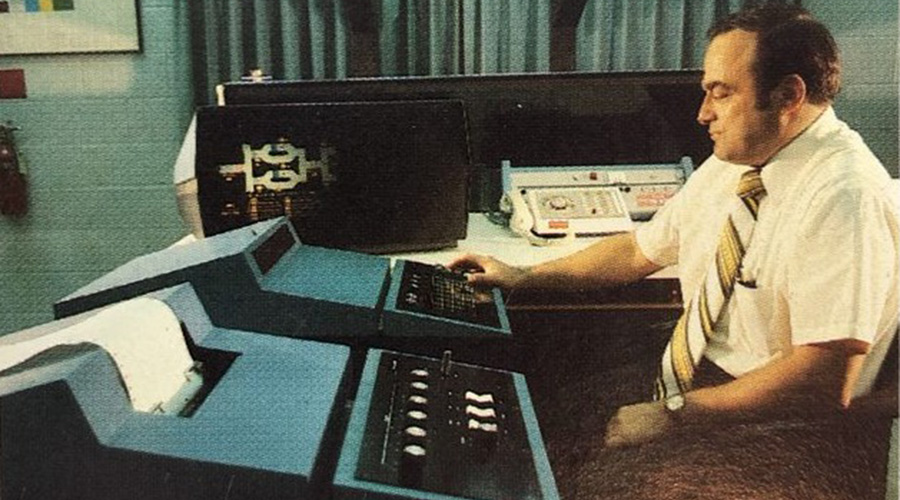How Succession Planning Can Help Combat the Great Retirement
As facility managers retire in droves, organizations need to be proactive about succession planning to protect institutional knowledge. That’s especially true when it comes to fire and life safety strategies and technology. Here are some tips.
By Jon Hart, contributing writer
We’ve likely all heard of the Great Resignation by now, but there’s another prominent hiring trend lurking behind the scenes: the Great Retirement. With 75 million Baby Boomers retiring by 2030, the Great Retirement is on course to supersede the Great Resignation as the most significant workforce trend of 2022.
For professionals in the facilities management world, this trend hardly comes as a surprise. The average age of a facilities manager (FM) is 49.5 years old, meaning rapid retirement is a prevalent challenge in the industry. FM employers are struggling not just to backfill these positions in the first place, but to bridge the widening skills gap.
A primary concern of this mass wave of retirement is the loss of institutional knowledge between generations. Twenty-three percent of FMs have worked in the field for more than 20 years, and the worry is that their troves of veteran knowledge will retire alongside them.
The solution here is twofold. First, organizations need to attract and retain younger employees with the type of innovative, tech savvy work environments to which they’re accustomed. Second, employers need the digital tools to be able to retain veteran knowledge in a manner that is easily transferable to rookies.
How to combat the Great Retirement in three words? Embrace digital transformation.
In the world of fire and life safety codes and standards, where my main expertise lies, we utilize digital solutions every day to address these challenges and others. The beauty of these digital tools is their application in several industries and professions, including that of the FM. Here are two ways these types of tools can aid in training employees and retaining generational knowledge for FMs and their organizations.
Upskilling Labor to Combat a Widening Skills Gap
To provide the most value to their organizations, today’s FMs need advanced business knowledge coupled with strong skills in strategic planning, emergency management, compliance and standards, leadership and communication. According to the 2021 FM Training Outlook Survey from the Professional Facility Management Institute, 91 percent of FM managers recognize a gap between the knowledge their teams have and what they need to excel. The International Journal of Facility Management cites the discrepancy between necessary skills and the skills taught in college as a top contributor to this knowledge gap.
Luckily, emerging technology is here to help upskill labor and impart knowledge that could only be learned through years in the field. There’s tremendous opportunity for digitized codes and standards, for example, to lend a hand in democratizing veteran wisdom and upskilling the next generation of qualified FMs.
Imagine if the 45-year veteran could easily create a knowledge base to bestow his industry expertise onto new employees instead of taking his note-filled code book out the door with him on retirement day. With digital, collaborative hubs for codes and standards, experienced FMs can easily leave notes within the code, bookmark those notes, and create curated collections of knowledge that are easily shared across teams. Creating a digital history ensures that expertise doesn’t disappear from the organization when its employees do.
In addition to promoting cross-generational collaboration, technology has also made great strides in offering interactive, accessible online training for employees seeking to advance their careers. When learning about codes and standards today, FMs can leverage videos, interactive modules, industry-specific content, situational content, and more anywhere at any time. Plus, off-the-page learning is great for younger generations who have grown up getting their information online.
Easing the Transfer of Responsibilities and Streamlining Tasks
Implementing digital tools helps to not only train newer employees and bridge the skills gap, but also create more innovative, collaborative, and efficient work environments that attract and retain newer generations as older ones retire. There are several use cases for how collaborative digital codes and standards can ease FM tasks on a day-to-day basis, including enabling earlier FM involvement on projects, streamlining communication across teams, documenting equivalencies, and more.
One example: Let’s say a new FM has filled the position of a retiree. What happens when, 15 years after the construction of a facility, a fire inspector notices something off and questions its compliance? That new FM needs visibility into everything that occurred throughout the building’s entire 15-year lifecycle to provide context and documentation to the inspector. Sifting through hundreds of digital folders to find disparate PDFs citing AHJ approval can feel hopeless—and in today’s technological age, it’s frankly not necessary anymore. In this scenario, FMs could leverage a digital platform that houses every note taken across teams and generations during the construction process. They could quickly use a search feature to locate a note left by the retired FM citing the AHJ approved an equivalency.
Here, the digital platform helps the new FM get up to speed, avoid disputes with inspectors, and ultimately perform his or her job more efficiently. Needless to say, the fewer headaches caused by outdated processes, the lower the employee churn. This is just one small example of how digital tools can create more streamlined, innovative work environments for the next generations of FMs.
The Bottom Line
As baby boomers retire at rapid rates, the facilities management world is facing a widening skills gap alongside labor shortage challenges. Amid these hiring trends, it is especially important for FMs and their employers to onboard emerging digital tools. These new technologies can help create future-proofed digital trails that secure veteran knowledge and help train younger employees with less experience. Additionally, adopting new digital tools can help ease the transfer of responsibilities to new FMs and make their daily tasks more streamlined. Plus, embracing digital tools can serve as a competitive advantage for organizations – not just for external stakeholders and building owners, but for internal recruitment and retention initiatives.
Jon Hart is the Technical Lead for fire protection engineering and a principal engineer for the NFPA. In this role he is responsible for technical direction and content development for all NFPA product offerings involving fire protection engineering, including sprinklers, fire pumps, and fire alarms.
Related Topics:












